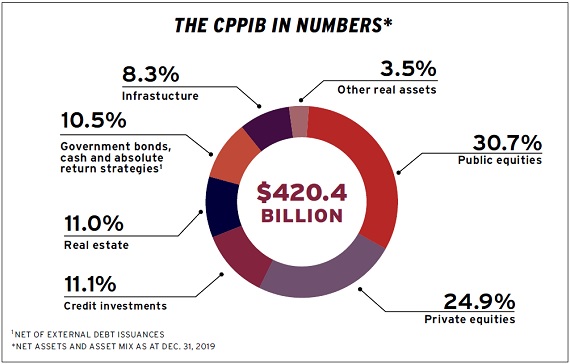

Historically, the Canada Pension Plan Investment Board’s credit functions were scattered across the organization. But in 2018, the pension fund consolidated its credit investments into one department to gain synergies.
Before the merger, the CPPIB’s principal credit investment group was within the private investments team, its private real estate debt group was within the real estate team and a public credit group was within the public market investing team.
Now it has six groups for credit — Americas leveraged finance, Americas structured credit and financials, [Asia-Pacific] credit, European credit, public credit and real assets credit — all housed within a credit investments department.
Read: Back to basics on private credit
“We do both what would be considered private credit, or private debt, and public credit,” says John Graham, the CPPIB’s senior managing director and global head of credit investments, who heads the amalgamated group.
The consolidated approach, which is part of a broader reorganization at the CPPIB, is more aligned with how the team is trying to build a global portfolio, he notes.
Emerging markets is a tangible example of the synergy from the new structure. “Take emerging markets — in North America, the markets are deep and the markets are mature, and there are very clear distinctions between real estate credit, corporate credit and structured credit,” says Graham.
“In markets that are still evolving and maturing, those distinctions aren’t as clear. So by having everybody together in APAC credit, it’s actually allowed us to be more co-ordinated and to be less concerned about distinctions between real estate and corporate, because they’re often very blurred. And so it’s actually allowed us to probably grow some of our businesses in less developed markets a little bit quicker.”
Read: Hydro Québec pension plan cautious about credit
Real assets credit is another area seeing synergies, he adds. “By bringing energy and infrastructure and all of that together, it allows us to play a full spectrum in the real assets space.”
In the credit space, the CPPIB is predominantly a direct lender. Antares Capital, the market leader in U.S. sponsor-backed middle-market lending, which the pension fund acquired in 2015, is one example of the CPPIB’s approach to credit investing.
While the U.S. sponsor-backed middle market has been attractive to the CPPIB for some time, the barriers of entry to build capabilities organically were too high. “You had deep relationships in the market, you had very strong incumbents,” says Graham. “And so, while we thought it was a very interesting market, it wasn’t one we thought we could do direct.”
Getting to know John Graham
Job title: Senior managing director and global head of credit investments
Joined the CPPIB: 2008
Previous roles: Prior to joining the CPPIB, he was a scientist at Xerox Innovation Group
What keeps him up at night: The breadth of the credit mandate
Outside of the office he can be found: Spending time outdoors hiking or walking his dogs
The CPPIB watched the market and learned the players. When General Electric Co. was divesting assets, one was Antares. “We did our homework,” he says. “We knew that they were the best. We knew it was a market we wanted to be in. So when it came to market, we pursued it and we acquired Antares, and really think of it as a completion strategy of things we can’t do off of our direct desk here in Toronto or New York.”
Read: CPPIB completes Antares Capital acquisition
Today, the CPPIB owns 84 per cent of Antares. It functions as a stand-alone company with a few of the CPPIB’s employees on its board, providing the pension fund with visibility into the U.S. middle market, notes Graham. “And people don’t often think of us as approaching a market this way where, instead of doing it direct alone, we decided that we should actually just buy a business that does it.”
On a five-year basis, the CPPIB’s credit investment strategies have outperformed all their benchmarks on a relative basis and delivered a dollar-added value of $3.4 billion as of March 31, 2019.
That said, the market presents challenges, such as high competition for assets. This is where the breadth of the credit investment team’s mandate is an advantage, says Graham.
Read: Why are institutional investors ramping up allocations to private equity?
“It’s why we have really been quite deliberate about building out our capabilities to ensure that we’re not a monolithic investor. We’re actually multi-disciplinary and we can invest in multiple different areas. So we don’t have hard allocations to any one sub-strategy and, if we see a certain market getting very toppy, we will just allocate resources into another part of the market.”

Yaelle Gang is editor of the Canadian Investment Review.
